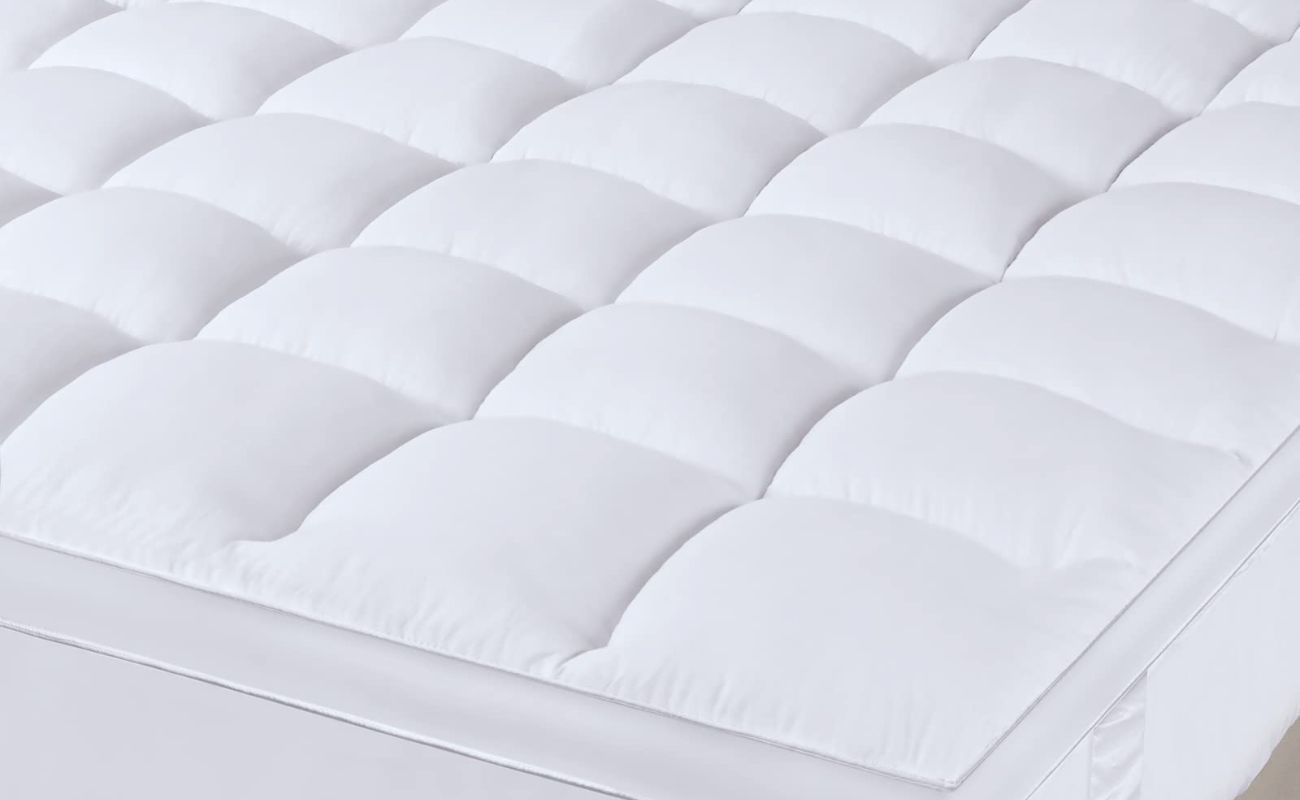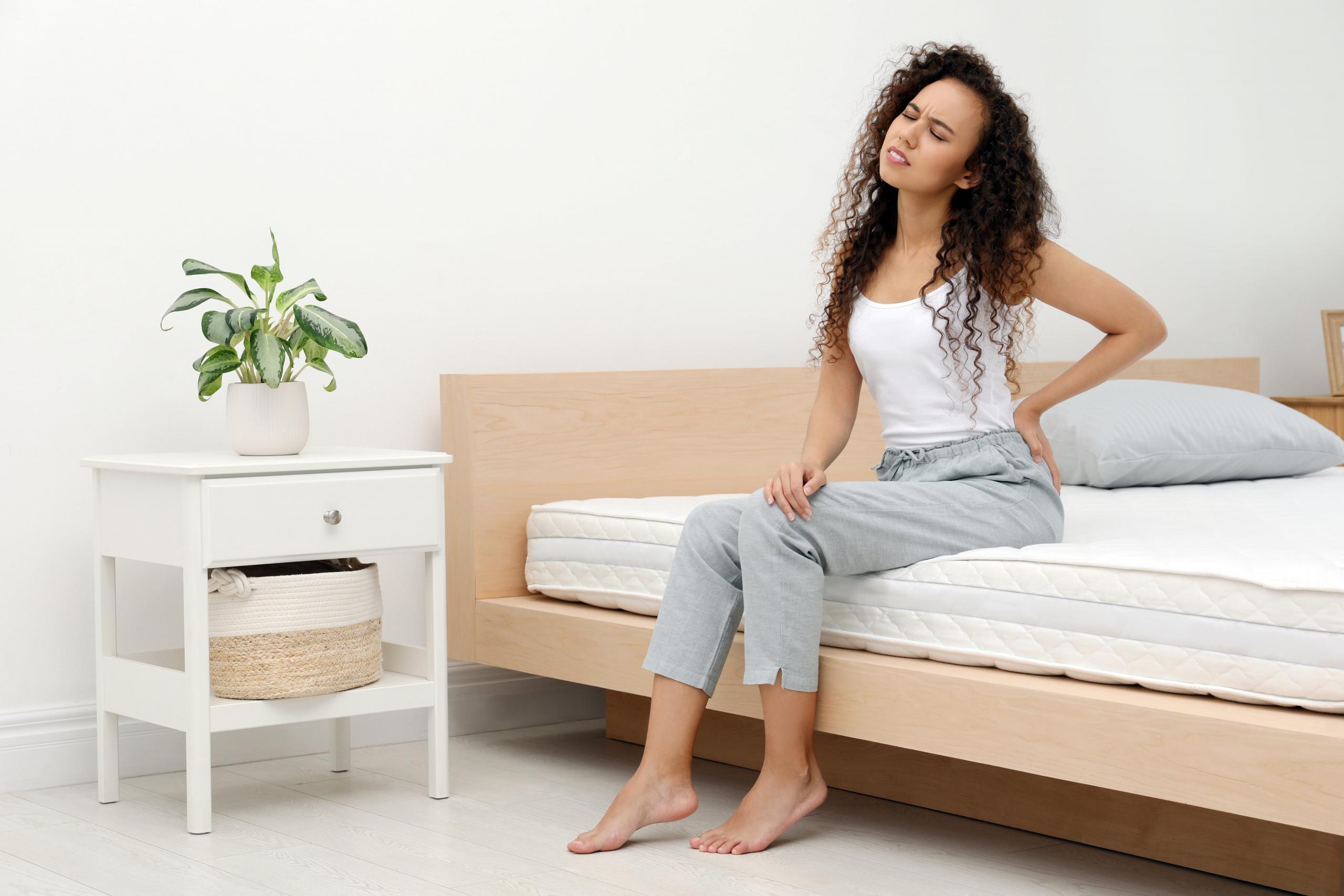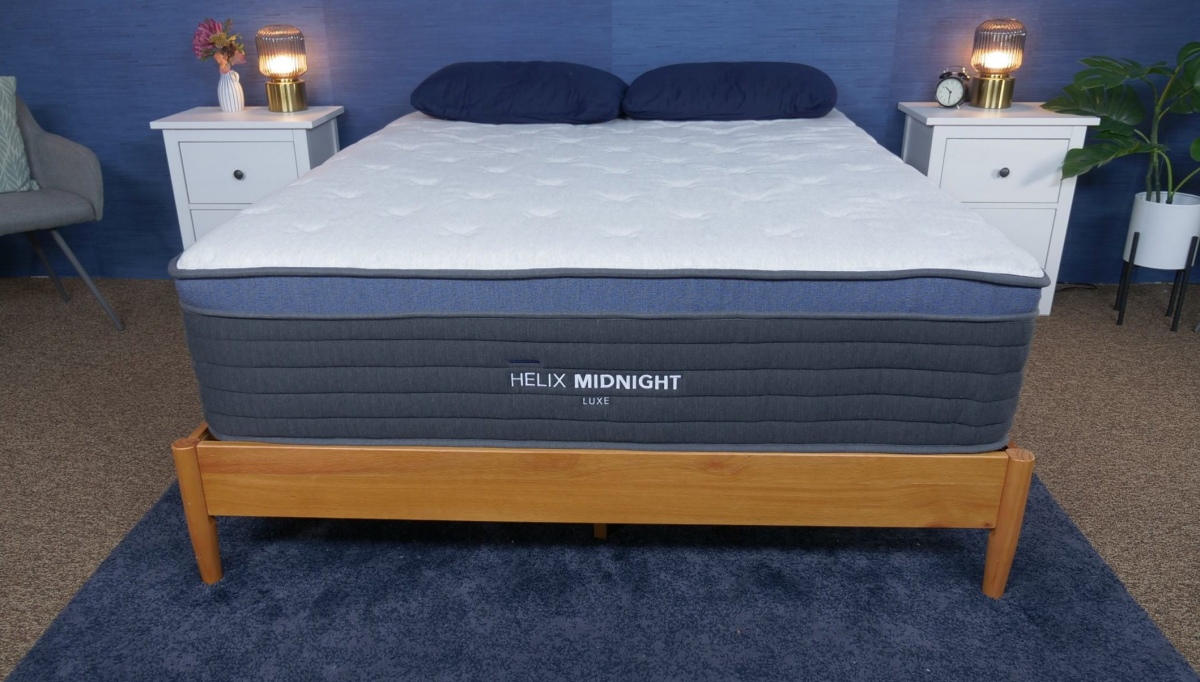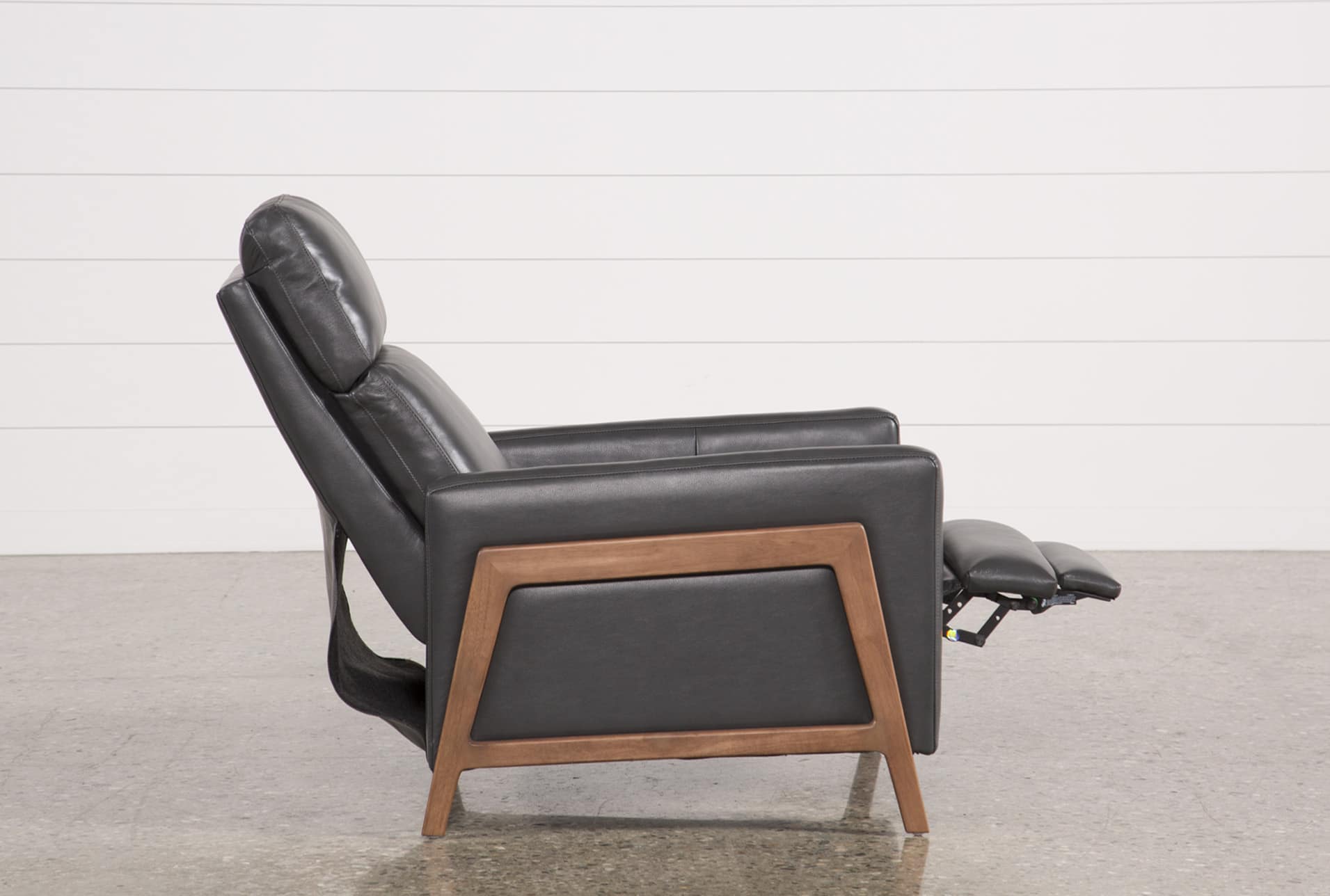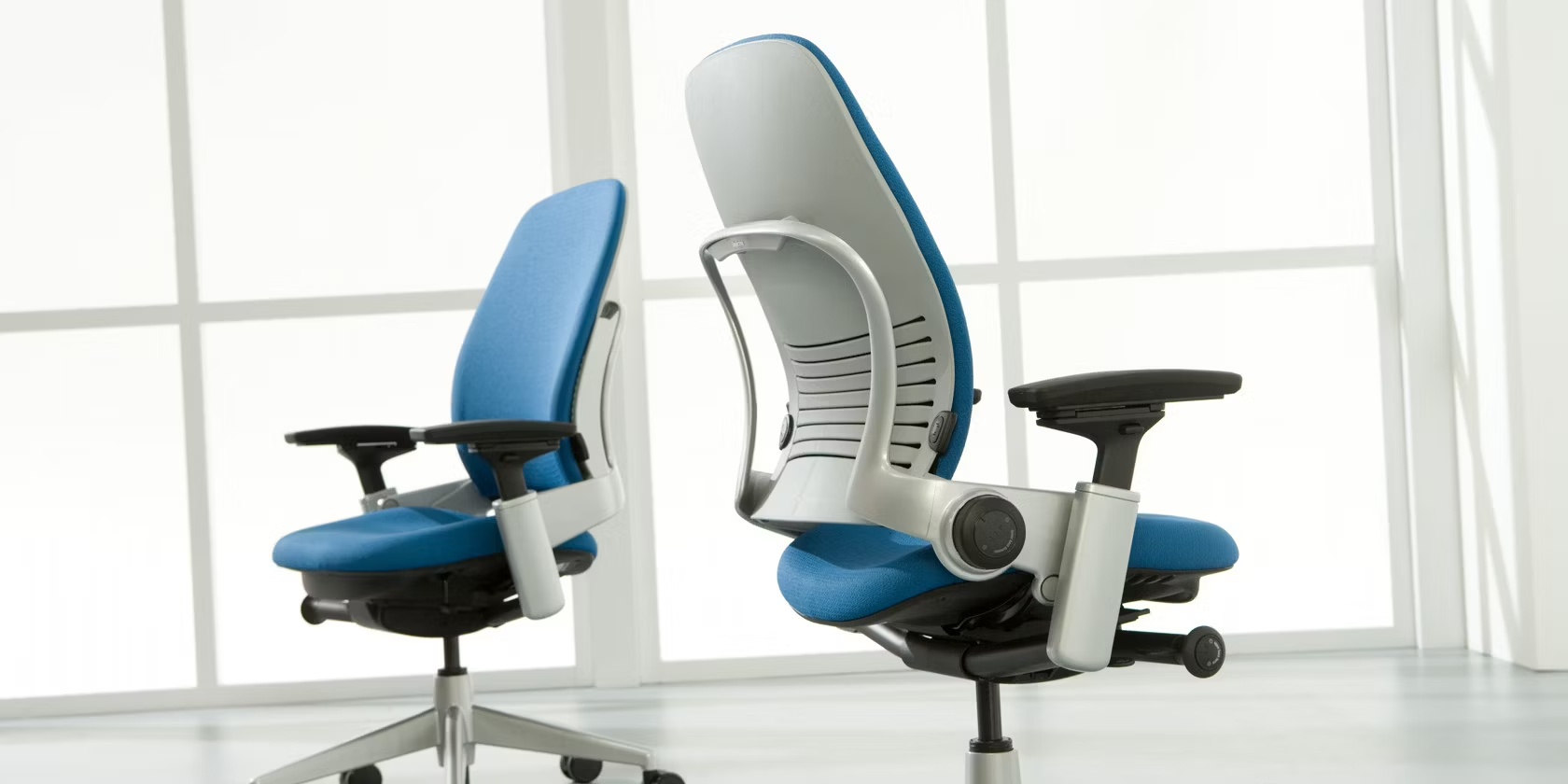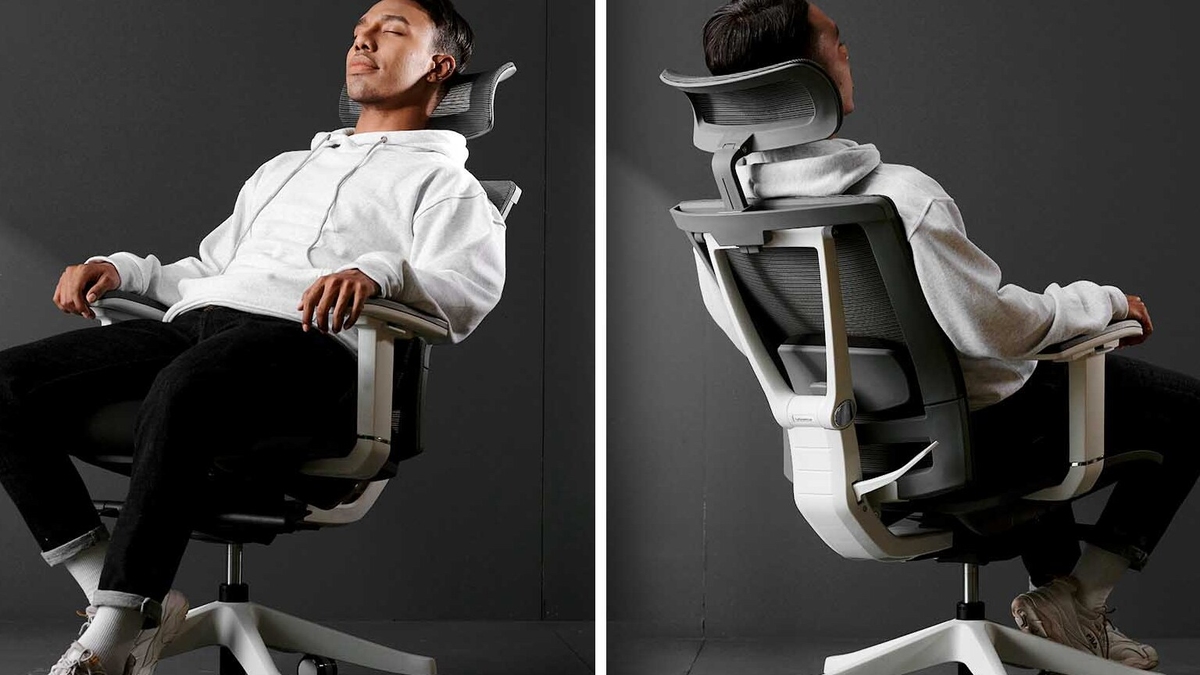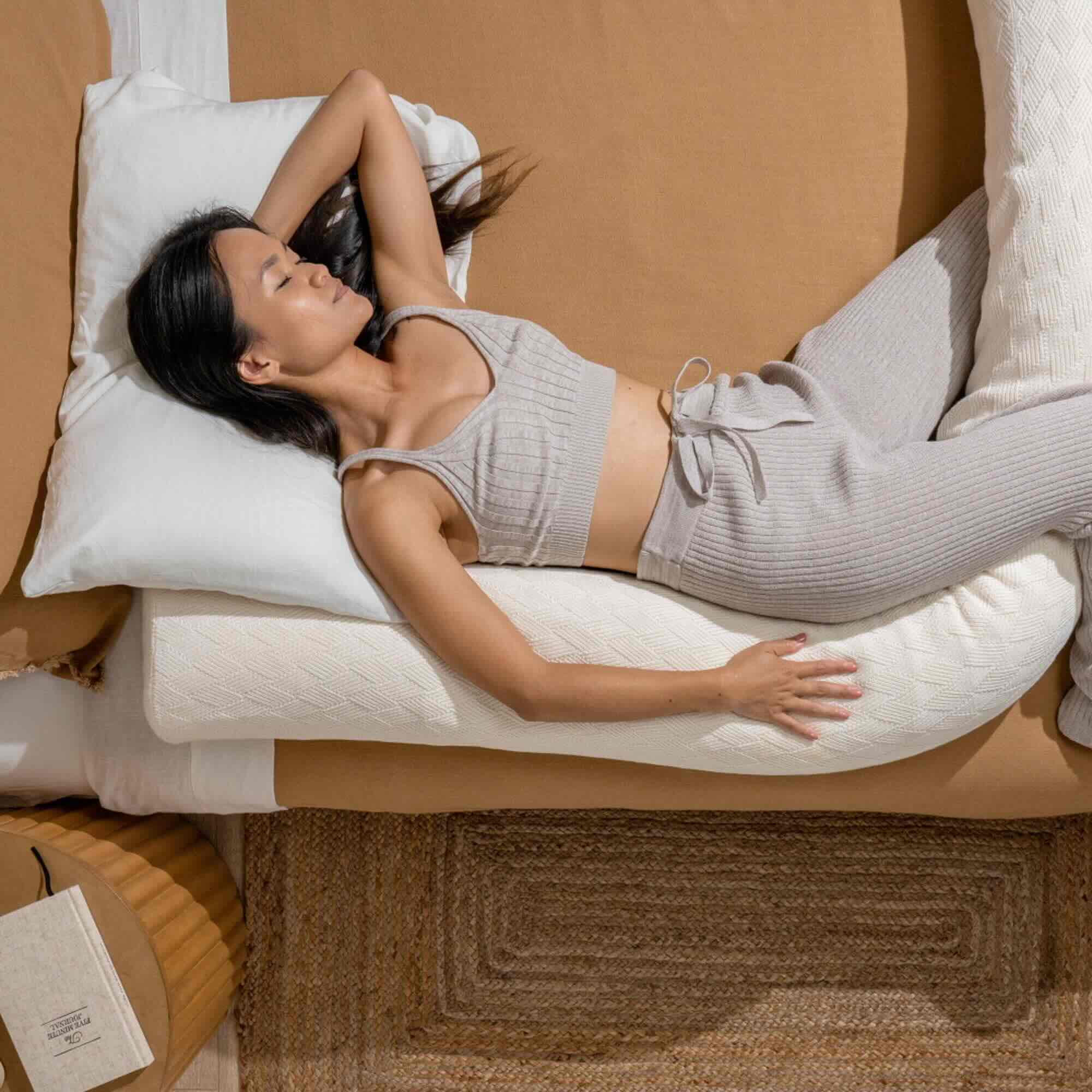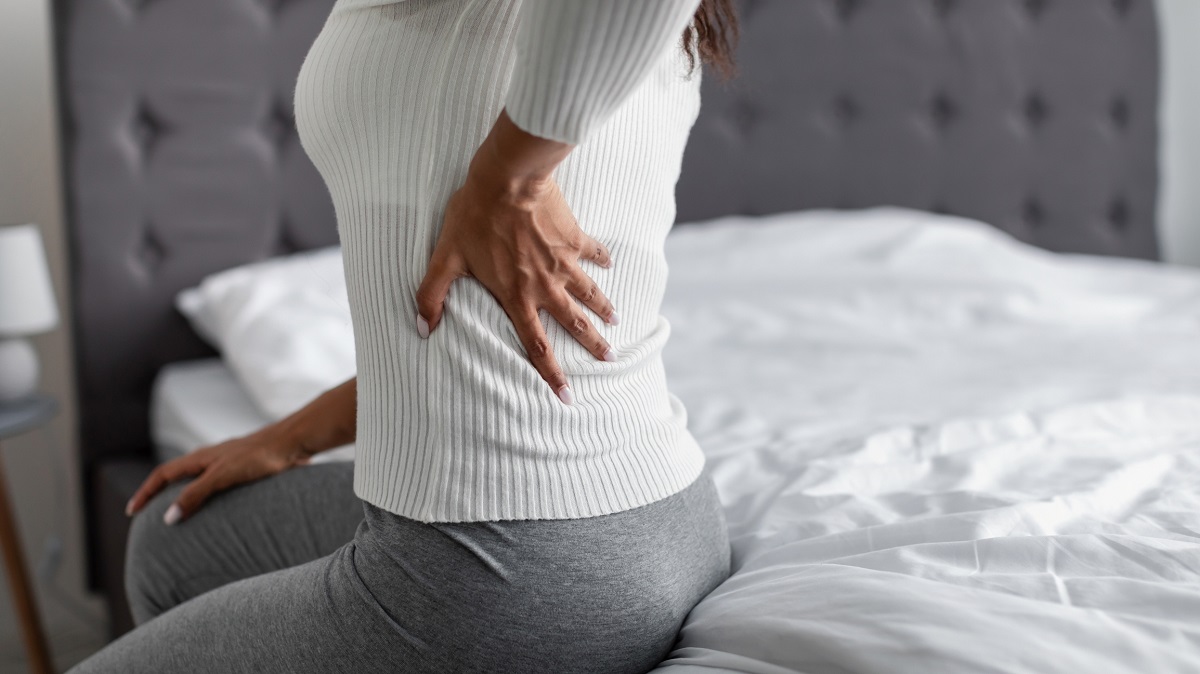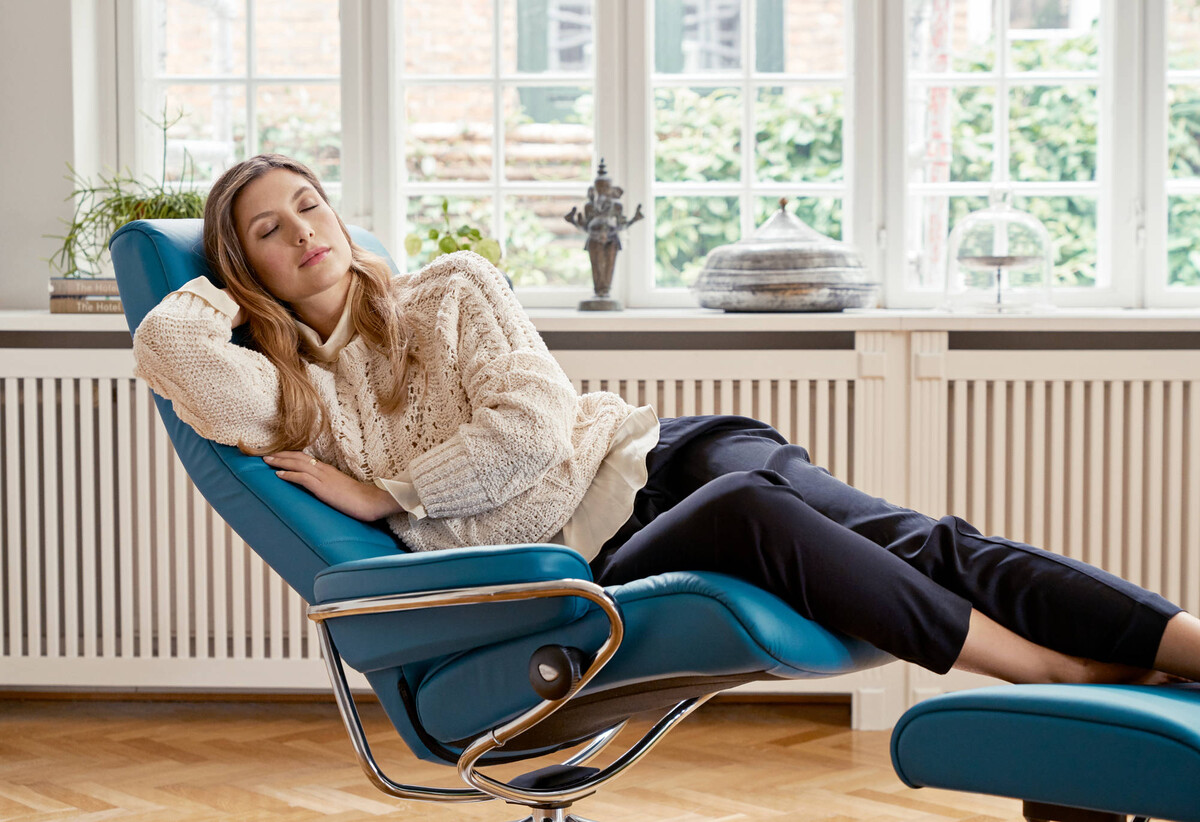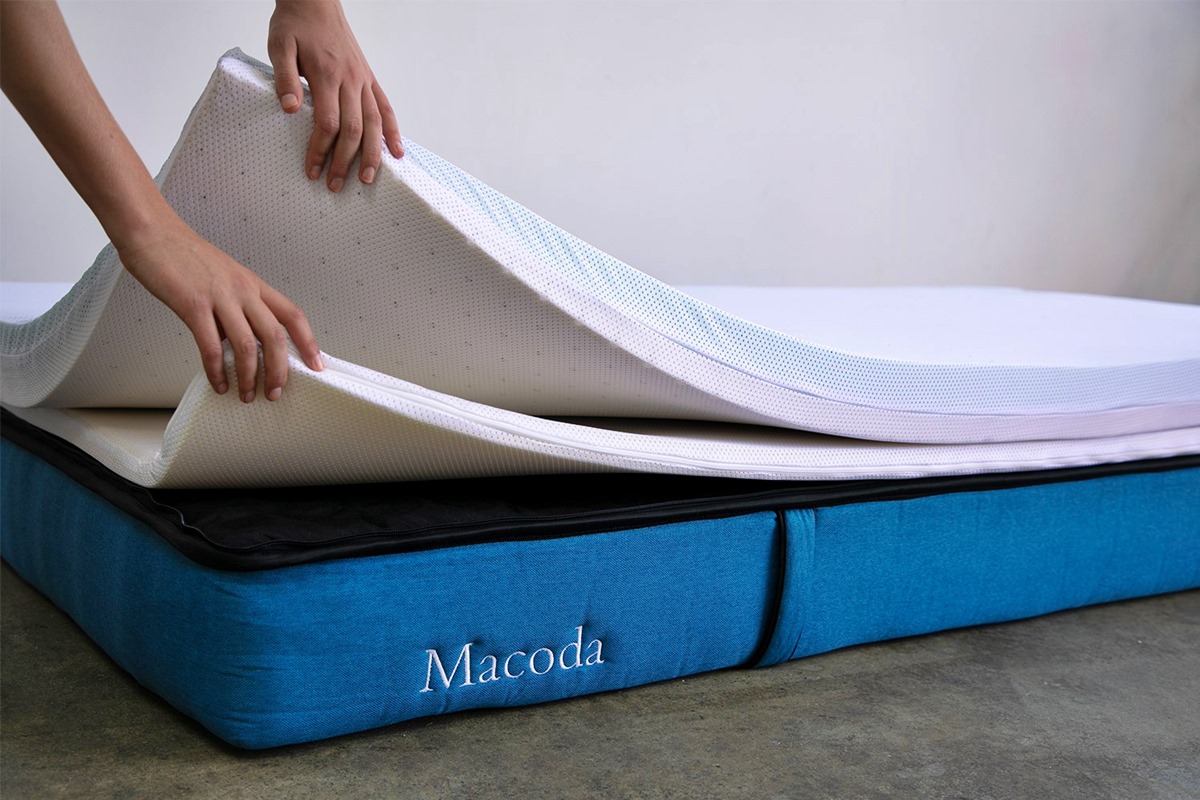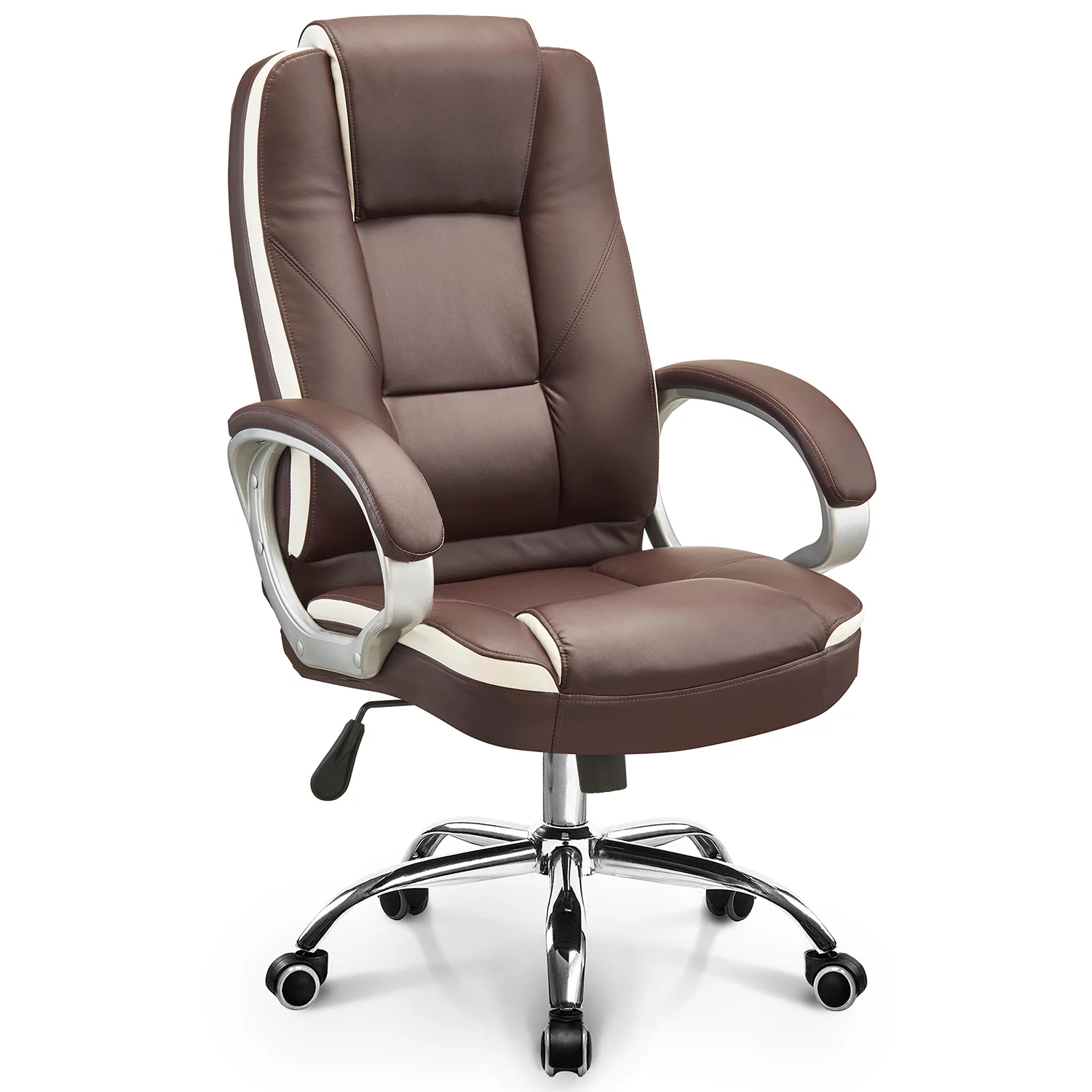Home>Furniture>Bedroom Furniture>What Is The Best Mattress For Bad Back Pain
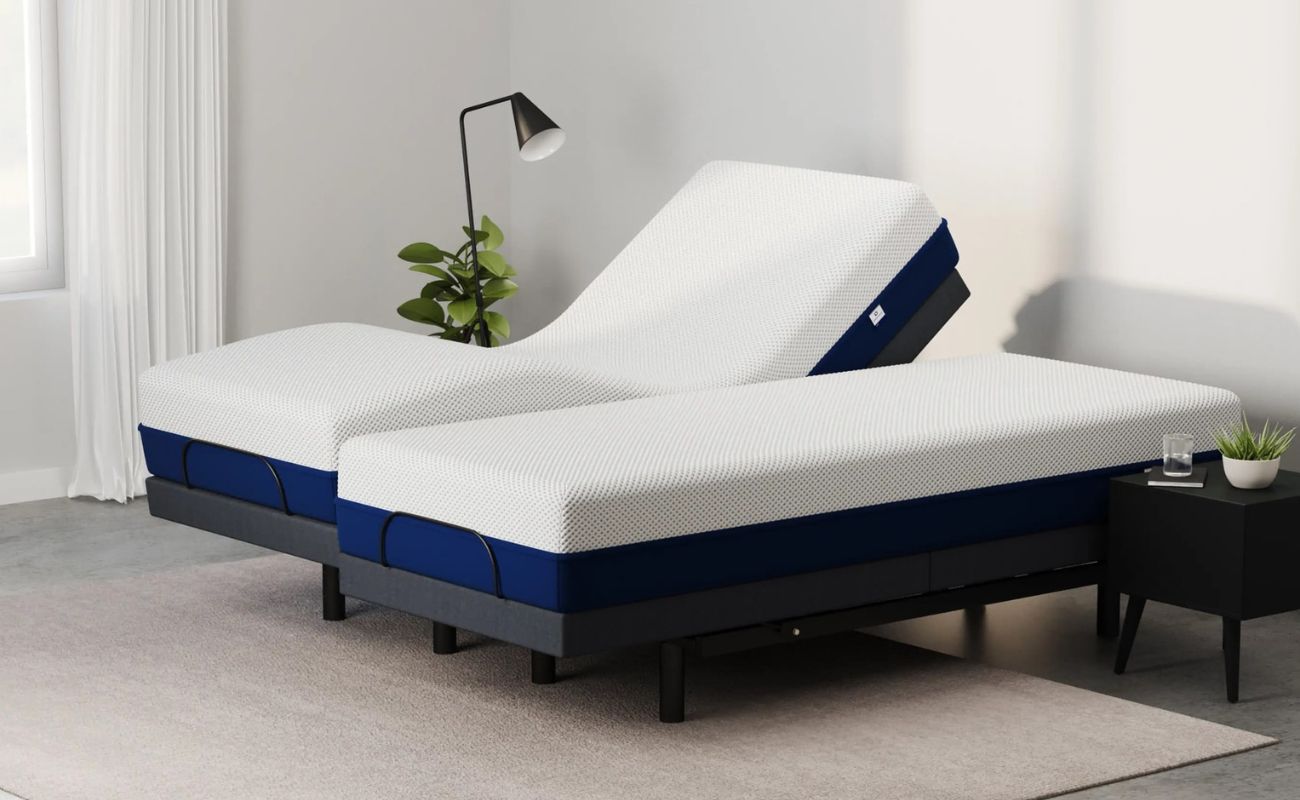

Bedroom Furniture
What Is The Best Mattress For Bad Back Pain
Modified: October 20, 2024
Find the perfect bedroom furniture for a restful night's sleep and relief from bad back pain. Explore our selection of mattresses designed to provide optimum support and comfort.
(Many of the links in this article redirect to a specific reviewed product. Your purchase of these products through affiliate links helps to generate commission for Storables.com, at no extra cost. Learn more)
Introduction
Back pain is a common ailment that can greatly impact our daily lives and overall well-being. Whether it’s caused by poor posture, muscle strain, or underlying medical conditions, finding relief for your back pain is crucial. One factor that plays a significant role in alleviating or exacerbating back pain is the mattress you sleep on.
Choosing the right mattress can make a world of difference in providing the necessary support and comfort to mitigate back pain. But with the vast array of options available, it can be overwhelming to determine which type of mattress is best suited for your specific needs.
In this article, we will delve into the qualities and features to consider when searching for a mattress to alleviate back pain. We will explore various types of mattresses that have been proven effective in addressing back pain, including memory foam, innerspring, latex, hybrid, and airbed mattresses. Additionally, we will provide expert tips to help you make an informed decision when selecting the best mattress for your back pain.
With the right mattress, you can wake up feeling refreshed, rejuvenated, and ready to tackle the day, free from the burden of back pain. So, let’s dive in and discover the best mattress options to help you find relief and improve your sleep quality.
Key Takeaways:
- Choosing the right mattress is crucial for alleviating back pain. Factors such as firmness, support, and pressure relief play a significant role in promoting proper spinal alignment and reducing discomfort.
- Memory foam, innerspring, latex, hybrid, and airbed mattresses each offer unique benefits for individuals with back pain. Consult with a healthcare professional, test different options, and consider trial periods and warranties to find the best fit for your specific needs.
Understanding Back Pain
Before delving into the specifics of finding the best mattress for back pain, it’s important to have a basic understanding of this common ailment. Back pain can manifest in various ways, ranging from a dull ache to sharp, stabbing sensations. It can be localized in one area or radiate down the legs, causing discomfort and mobility issues.
Back pain can be attributed to a multitude of causes, including:
- Muscle strain: This occurs when the muscles in the back are overstretched or torn, often from physical activity, poor posture, or lifting heavy objects improperly.
- Herniated disc: A herniated disc is a condition in which the cushioning discs between the vertebrae in the spine rupture or bulge, causing pressure on nearby nerves and resulting in back pain.
- Spinal abnormalities: Conditions such as scoliosis (abnormal curvature of the spine), spinal stenosis (narrowing of the spinal canal), and osteoarthritis can contribute to chronic back pain.
- Medical conditions: Back pain can also be a symptom of underlying medical conditions like fibromyalgia, kidney stones, or infections.
- Posture and lifestyle factors: Prolonged sitting, sedentary lifestyle, obesity, and poor posture can all aggravate back pain.
It’s important to consult with a healthcare professional to diagnose the root cause of your back pain and determine the appropriate treatment plan. In many cases, finding the right mattress can complement your treatment and help alleviate discomfort.
When experiencing back pain, it’s crucial to prioritize proper support and alignment of the spine during sleep. This is where the choice of mattress becomes paramount.
Next, we will explore the factors to consider when selecting a mattress to combat back pain effectively.
Factors to Consider for a Mattress
When looking for a mattress to alleviate back pain, several important factors should be considered. Each person’s needs and preferences may vary, so it’s essential to assess these factors before making a decision:
- Firmness: The firmness level of a mattress is a critical consideration. While there is no one-size-fits-all approach, a medium-firm mattress is often recommended for individuals with back pain. It provides adequate support while allowing some contouring to the body’s natural curves.
- Support: A supportive mattress is crucial for back pain relief. It should evenly distribute your body weight and promote proper spinal alignment, especially in the lumbar region. Look for mattresses that have excellent support systems, such as high-density foam or pocketed coils.
- Pressure Relief: Pressure points can contribute to back pain. Look for a mattress that offers pressure relief, particularly in areas prone to stress, such as the hips, shoulders, and lower back. Memory foam mattresses are known for their ability to alleviate pressure points.
- Quality Materials: Investing in a high-quality mattress is essential. Durable materials, such as high-density foam, latex, or individually wrapped coils, can provide longevity and maintain their supportive properties over time.
- Motion Isolation: If you sleep with a partner, consider a mattress with good motion isolation. This feature ensures that movement on one side of the bed does not disturb the other, allowing for undisturbed sleep.
- Temperature Regulation: Some mattresses may sleep hot, causing discomfort. Look for mattresses with cooling technologies like breathable covers, gel-infused foams, or airflow-enhancing designs to promote a cooler sleeping environment.
- Edge Support: A mattress with reinforced edges provides better support when sitting or getting in and out of bed. This can be particularly beneficial for individuals with back pain who need extra stability.
By considering these factors, you can narrow down the options and find a mattress that not only supports your back but also suits your personal preferences for comfort and sleep hygiene.
Now let’s explore the different types of mattresses that have proven effective in addressing back pain.
Types of Mattresses for Back Pain
When it comes to choosing a mattress for back pain, several types have shown promise in providing relief and promoting spinal alignment. Let’s take a closer look at each of these mattress types:
- Memory Foam Mattresses: Memory foam mattresses are renowned for their ability to conform to the body’s contours, providing excellent support and pressure relief. The material responds to heat and pressure, allowing it to contour to the natural curves of your spine. This can help alleviate back pain by reducing pressure on sensitive areas.
- Innerspring Mattresses: Innerspring mattresses are constructed with a system of steel coils that provide support and durability. These mattresses offer a responsive feel and excellent airflow. Look for mattresses with a higher coil count and varying tension zones to ensure proper support for your back.
- Latex Mattresses: Latex mattresses are made from natural or synthetic latex foam. They offer a balance of support and contouring, which can help relieve pressure points. Latex is also known for its durability and resilience, ensuring long-lasting support for your back.
- Hybrid Mattresses: Hybrid mattresses combine the best of both worlds by combining memory foam or latex layers with an innerspring system. This combination provides the benefits of contouring and pressure relief from foam, along with the support and responsiveness of coils. Hybrid mattresses can be an excellent choice for individuals with back pain who desire both comfort and support.
- Airbed Mattresses: Airbed mattresses allow for personalized firmness adjustments by allowing you to add or release air from internal chambers. This customization feature can help individuals find their ideal level of support and alleviate back pain.
It’s important to note that the effectiveness of each mattress type may vary depending on your specific needs and preferences. Some individuals may find more relief with memory foam, while others may prefer the responsiveness of innerspring or hybrid mattresses. Consider trying out different mattress types to determine which one provides the best support and comfort for your back pain.
Now that you’re familiar with the different mattress types, let’s move on to some tips for choosing the best mattress for back pain.
Memory Foam Mattresses
Memory foam mattresses have gained immense popularity over the years for their ability to provide exceptional comfort and support. These mattresses are constructed with layers of memory foam, a viscoelastic material that reacts to heat and pressure, molding to the body’s contours. Here are some key benefits and considerations when it comes to memory foam mattresses for back pain:
- Pressure Relief: Memory foam mattresses excel at relieving pressure points, making them an ideal choice for individuals with back pain. The foam contours to the body, allowing for proper alignment and reducing stress on the spine.
- Spinal Alignment: The conforming nature of memory foam promotes proper spinal alignment by filling in the gaps between your body and the mattress. This helps to maintain a neutral spine position, which is crucial for individuals with back pain.
- Support: While memory foam mattresses are known for their plush and contouring feel, they also offer sufficient support for the back. High-density memory foam provides the necessary support to keep the spine properly aligned and reduce the risk of further discomfort or pain.
- Motion Isolation: Memory foam’s ability to absorb movement makes it an excellent choice for couples or individuals who share a bed. This feature minimizes motion transfer, allowing for uninterrupted sleep even if your partner moves throughout the night.
- Durability: High-quality memory foam mattresses are designed to last for many years without losing their supportive properties. Look for mattresses made with CertiPUR-US® certified foam, as it ensures the foam is free of harmful substances and maintains its durability.
- Temperature Regulation: One common concern with memory foam is its heat retention. However, many modern memory foam mattresses are engineered with advanced cooling technologies. Look for mattresses with infused cooling gel, open-cell foam, or breathable covers to ensure a comfortable sleeping temperature.
While memory foam mattresses offer numerous benefits for individuals with back pain, it’s essential to find the right firmness level. Generally, a medium-firm memory foam mattress is recommended, as it strikes a balance between comfort and support.
When purchasing a memory foam mattress, be sure to consider factors such as mattress thickness, foam density, and the warranty offered by the manufacturer. It’s also helpful to read customer reviews and compare different brands and models to find the best memory foam mattress for your specific needs and budget.
Now that we’ve explored memory foam mattresses, let’s move on to another popular mattress type: innerspring mattresses.
Read more: What Type Of Mattress Is Good For Back Pain
Innerspring Mattresses
Innerspring mattresses have been a popular choice for decades and are known for their traditional coil support system. These mattresses are characterized by their bouncy feel and excellent airflow. Here are some key considerations and benefits of innerspring mattresses for individuals with back pain:
- Support: Innerspring mattresses are designed with a network of steel coils that provide targeted support and firmness. The distribution of weight across the mattress helps to maintain proper spinal alignment and alleviate back pain.
- Responsive Feel: The coil system in innerspring mattresses provides a springy feel and responsiveness, making it easier to move and change positions during sleep. This can be beneficial for individuals with back pain who may find it challenging to adjust positions on a memory foam mattress.
- Edge Support: Innerspring mattresses often have reinforced edges, which offer excellent support when sitting or getting in and out of bed. This feature can be particularly beneficial for individuals with back pain who require extra stability.
- Cooling: Innerspring mattresses are known for their superior airflow, allowing heat to dissipate more effectively. This can help regulate body temperature and prevent overheating during sleep, providing added comfort for those with back pain.
- Durability: High-quality innerspring mattresses are designed to be long-lasting and maintain their supportive properties for years. Look for mattresses with a higher coil count and strong coil gauge to ensure durability and longevity.
When choosing an innerspring mattress for back pain, consider the firmness level that best suits your needs. While medium to medium-firm is generally recommended, it’s important to find a balance between support and comfort that works for you.
It’s worth noting that advancements in innerspring technology have led to the development of hybrid mattresses, which combine the benefits of innerspring and foam or latex. Hybrid mattresses can offer the best of both worlds by providing the support of coils along with the contouring properties of foam or latex.
As with any mattress purchase, it’s essential to research and compare different brands and models, read customer reviews, and consider factors such as coil gauge, coil count, and the overall construction quality of the mattress.
Now that we’ve explored innerspring mattresses, let’s move on to another popular type: latex mattresses.
Look for a mattress with medium-firm to firm support to help alleviate back pain. Memory foam or latex mattresses are often recommended for their pressure-relieving properties. Be sure to test out different options to find the best fit for your specific needs.
Latex Mattresses
Latex mattresses have gained popularity in recent years for their unique combination of comfort and support. These mattresses are made from either natural latex derived from rubber trees or synthetic latex. Here are some key considerations and benefits of latex mattresses for individuals with back pain:
- Support: Latex mattresses provide excellent support for the back. The material is naturally responsive and conforms to the body, helping to maintain proper spinal alignment and alleviate pressure points.
- Pressure Relief: Latex mattresses offer exceptional pressure relief by evenly distributing body weight across the surface. This helps reduce aches and discomfort in the back, shoulders, and hips.
- Bounce and Responsiveness: Latex mattresses have a unique bounce and responsiveness, making it easier to move and change positions during sleep. This can be beneficial for individuals with back pain who may need to adjust their posture throughout the night.
- Natural Materials: Natural latex mattresses are made from sustainable materials and are hypoallergenic, resistant to mold and dust mites. This makes them an excellent choice for individuals with allergies or sensitivities.
- Durability: Latex mattresses are known for their durability and resilience. They have a longer lifespan compared to other mattress types, making them a worthwhile investment for those seeking long-term back pain relief.
- Temperature Regulation: Latex foam has natural breathability, allowing for efficient airflow and heat dissipation. This helps in maintaining a cool sleeping environment, ensuring optimal comfort for individuals with back pain.
When selecting a latex mattress for back pain relief, consider the firmness level that suits your needs. Latex mattresses typically come in a range of firmness options, including soft, medium, and firm. Depending on your preference and the severity of your back pain, you may opt for a medium-firm latex mattress, which strikes a balance between support and comfort.
It’s essential to ensure that the latex used in the mattress is high-quality and derived from reputable sources. Look for mattresses that are certified by organizations such as GOLS (Global Organic Latex Standard) or eco-INSTITUT to ensure that the latex is free from harmful chemicals and meets strict environmental and health standards.
Lastly, consider factors such as mattress thickness, cover material, and warranty offered by the manufacturer when making your decision.
Now that we’ve explored latex mattresses, let’s move on to another popular type: hybrid mattresses.
Hybrid Mattresses
Hybrid mattresses are a combination of two or more mattress technologies, typically combining innerspring coils with layers of foam or latex. These mattresses aim to provide the benefits of different materials in one cohesive design. Here are some key considerations and benefits of hybrid mattresses for individuals with back pain:
- Supportive Construction: Hybrid mattresses often feature a base layer of pocketed coils or innerspring coils that offer sturdy support. The coil system helps maintain proper spinal alignment and evenly distribute body weight, reducing pressure on the back.
- Pressure Relief: The foam or latex layers in hybrid mattresses provide enhanced pressure relief, contouring to the body’s curves. This can help alleviate back pain and reduce discomfort in sensitive areas.
- Combination of Comfort and Responsiveness: Hybrid mattresses combine the contouring properties of foam or latex with the responsive feel of coils. This combination allows for a balance of support and cushioning, making it easier to move and change positions during sleep.
- Edge Support: Many hybrid mattresses feature reinforced edges, providing robust support and preventing sagging. This feature can be beneficial for individuals with back pain who require stability when sitting or getting in and out of bed.
- Breathability and Temperature Regulation: Hybrid mattresses often incorporate materials that promote good airflow, helping to regulate body temperature and prevent overheating during sleep. This can enhance comfort and reduce discomfort for individuals with back pain.
- Durability: The combination of high-quality foams, latex, and coils ensures that hybrid mattresses offer durability and longevity. Look for mattresses with a sturdy coil system and high-density foam or latex layers to ensure long-lasting support for your back.
When selecting a hybrid mattress, consider the specific components and their arrangement within the mattress. This will impact the overall feel and performance of the mattress. Test different hybrids to find the right balance of materials and firmness level that suits your back pain needs.
As with any mattress purchase, research the reputation of the manufacturer, read customer reviews, and consider factors such as warranty, return policy, and CertiPUR-US® certification for foam materials.
Now that we’ve explored hybrid mattresses, let’s move on to another option: airbed mattresses.
Airbed Mattresses
Airbed mattresses utilize an adjustable air chamber as the primary support system, allowing individuals to customize the firmness level according to their preferences. Here are some key considerations and benefits of airbed mattresses for individuals with back pain:
- Personalized Support: The main advantage of airbed mattresses is their ability to adjust the firmness level to suit individual needs. By adding or releasing air from the chamber, you can find the perfect level of support that alleviates your back pain and promotes proper spinal alignment.
- Pressure Distribution: Airbed mattresses evenly distribute body weight across the surface, relieving pressure points and reducing the strain on the back. This can help reduce discomfort and provide a comfortable sleep surface for individuals with back pain.
- Customizable Firmness: With an airbed mattress, you have the flexibility to adjust the firmness on each side of the bed. This can be beneficial for couples with different support needs, ensuring everyone gets the optimal level of comfort and support for their back.
- Supportive Construction: Airbed mattresses often feature additional components such as foam or latex layers to enhance support and comfort. These materials can provide contouring and cushioning to complement the adjustability of the air chamber.
- Temperature Regulation: Airbed mattresses allow for better airflow compared to other mattress types, preventing heat buildup and promoting a cooler sleeping environment. This can be particularly advantageous for individuals with back pain who may experience discomfort when overheated.
- Durability: While airbed mattresses are known for their adjustable nature, they are also designed to be durable and long-lasting. Look for models with durable air chambers and sturdy construction to ensure the mattress maintains its supportive properties over time.
When selecting an airbed mattress, consider factors such as the quality and design of the air chambers, the control mechanism for adjusting the firmness, and the overall construction quality. Look for reputable brands that offer warranties and good customer support to ensure a satisfactory experience.
It’s important to note that airbed mattresses may require occasional adjustments to find the optimal firmness level. However, the ability to customize the support makes them a viable option for individuals with specific back pain needs.
Now that we’ve explored airbed mattresses, let’s move on to some tips for choosing the best mattress for back pain.
Tips for Choosing the Best Mattress for Back Pain
When selecting a mattress to alleviate back pain, consider the following tips to help you find the best option:
- Consult with a healthcare professional: Before making a decision, seek advice from a healthcare professional who can provide insights and recommendations based on your specific back pain condition.
- Test out different mattresses: Take the time to physically test out different mattress types and firmness levels to determine which feels most comfortable and supportive for your back.
- Consider your sleeping position: Your preferred sleeping position affects the pressure points and alignment of your spine. For example, side sleepers may benefit from a softer mattress, while back or stomach sleepers may need a firmer surface for proper support.
- Focus on support and alignment: Look for a mattress that provides proper support and maintains spinal alignment. This ensures that your entire body, including the back, is properly supported while you sleep.
- Seek pressure relief: Consider a mattress that offers pressure relief for sensitive areas of the body, such as the shoulders, hips, and lower back. This helps alleviate pain and prevents the build-up of pressure points.
- Find the right balance of firmness: While a mattress needs to be supportive, it shouldn’t be too firm or too soft. Aim for a medium-firm mattress that provides a balance between comfort and support for your back.
- Consider your weight and body type: Factors such as weight and body type can influence the level of support and comfort needed. Heavier individuals may require a firmer mattress to properly support their back, while lighter individuals may find a softer option more suitable.
- Account for motion isolation: If you share your bed with a partner, consider a mattress with good motion isolation. This minimizes disturbances caused by movement, ensuring more restful sleep for both individuals.
- Take advantage of trial periods and warranties: Look for mattresses that offer trial periods or generous return policies, allowing you to test the mattress for an extended period and ensure it’s the right fit for your back pain. Additionally, consider the warranty offered by the manufacturer to protect your investment.
By considering these tips and factors, you can make an informed decision when selecting the best mattress to alleviate your back pain. Keep in mind that everyone’s needs are different, so it’s crucial to find a mattress that suits your specific requirements and preferences.
Now let’s wrap up our discussion on finding the best mattress for back pain.
Conclusion
Choosing the right mattress is essential for individuals seeking relief from back pain. By considering factors such as firmness, support, pressure relief, and durability, you can select a mattress that promotes proper spinal alignment and reduces discomfort.
Memory foam mattresses excel at contouring to the body and providing pressure relief, making them an excellent choice for individuals with back pain. Innerspring mattresses offer responsive support and cooling airflow, while latex mattresses combine support and comfort with a natural, hypoallergenic material. Hybrid mattresses combine the best of different technologies, while airbed mattresses allow for customizable firmness.
To ensure you choose the best mattress for your back pain, consult with a healthcare professional and test out different options. Consider your sleeping position, weight, and body type to find the right balance of support and comfort. Look for mattresses with trial periods, warranties, and reputable certifications to protect your investment.
A quality mattress can improve your sleep quality and overall well-being, allowing you to wake up without the burden of back pain. Investing in the proper support and comfort for your back can make a significant difference in your day-to-day life.
Remember, everyone’s preferences and needs vary, so take the time to find the mattress that works best for you. With the right mattress, you can enjoy restful sleep and wake up feeling refreshed, ready to tackle each day with a healthy and pain-free back.
Frequently Asked Questions about What Is The Best Mattress For Bad Back Pain
Was this page helpful?
At Storables.com, we guarantee accurate and reliable information. Our content, validated by Expert Board Contributors, is crafted following stringent Editorial Policies. We're committed to providing you with well-researched, expert-backed insights for all your informational needs.
